
Clinical Optometry
Scope & Guideline
Driving Impactful Discoveries in Eye Health.
Introduction
Aims and Scopes
- Clinical Practice and Patient Care:
Focuses on research that directly impacts clinical practices in optometry, including patient management and treatment outcomes. - Public Health and Epidemiology:
Explores the prevalence of ocular diseases and conditions in various populations, contributing to a better understanding of public health implications. - Innovative Technologies and Methods:
Investigates new technologies and methodologies in optometry, such as tele-optometry and digital health tools, to improve eye care delivery. - Educational Practices in Optometry:
Examines the training and educational experiences of optometry professionals, particularly in response to evolving healthcare landscapes. - Vision Science and Research:
Covers fundamental and applied research in vision science, including studies on visual function, ocular health, and the physiological aspects of vision.
Trending and Emerging
- Digital Eye Strain and Computer Vision Syndrome:
With the rise of digital device usage, there is an increasing focus on understanding and mitigating digital eye strain, particularly in specific populations like gamers and students. - Tele-Optometry and Remote Care Solutions:
The COVID-19 pandemic has accelerated interest in tele-optometry, leading to research on the effectiveness and implementation of remote eye care services. - Diversity and Inclusivity in Eye Care:
Emerging studies are focusing on the ocular health disparities among diverse populations, emphasizing the need for inclusive practices in optometry. - Behavioral and Psychological Aspects of Vision:
There is a growing trend towards exploring the psychological and behavioral factors affecting vision care, including quality of life assessments among patients with ocular conditions. - Innovative Contact Lens Technologies:
Research on new contact lens designs and materials, particularly those aimed at addressing specific vision problems like astigmatism and presbyopia, is on the rise.
Declining or Waning
- Traditional Prescriptive Practices:
Research focusing on conventional methods of spectacle and contact lens prescriptions has decreased as innovative practices and technologies gain prominence. - Invasive Treatment Approaches:
Studies centered around invasive ocular surgeries or procedures appear to be less frequent, potentially reflecting a shift towards non-invasive and preventative strategies. - General Ocular Disease Studies:
While important, broad studies on ocular diseases without specific focus on treatment or management strategies are less common, indicating a shift towards more targeted research. - Aging and Vision Loss Studies:
Research specifically focused on age-related vision loss without a direct application to treatment or rehabilitation strategies has seen a decline in interest.
Similar Journals

JOURNAL OF VISION
Advancing Knowledge in Ophthalmology and Sensory SystemsThe JOURNAL OF VISION, published by the ASSOCIATION FOR RESEARCH IN VISION AND OPHTHALMOLOGY INC, stands as a premier platform in the fields of Ophthalmology and Sensory Systems. Since its inception in 2001, this Open Access journal has worked to disseminate innovative research and groundbreaking discoveries that advance our understanding of vision science. With an impressive impact factor and ranked in the Q2 quartile for both Ophthalmology and Sensory Systems categories as of 2023, it offers a remarkable avenue for scholars and practitioners alike to share their insights and foster collaboration. Based in the United States, the journal maintains a commitment to accessibility, allowing researchers worldwide to engage with its comprehensive body of work. The JOURNAL OF VISION not only enhances the global dialogue around ocular health and sensory processing but also serves as an essential resource for professionals aiming to stay at the forefront of vision research.
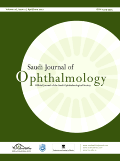
Saudi Journal of Ophthalmology
Innovative Insights: Shaping the Future of Eye CareSaudi Journal of Ophthalmology, published by Wolters Kluwer Medknow Publications, stands as a crucial platform for the dissemination of innovative research and clinical practices in the field of ophthalmology. Since its inception in 2009, this journal has effectively contributed to the growing body of knowledge with a focus on addressing the diverse visual health challenges faced globally. With an ISSN of 1319-4534 and a E-ISSN of 2542-6680, the journal is indexed in Scopus, where it ranks in the Q3 category of ophthalmology, reflecting its commitment to quality research despite the competitive landscape. Situated in India, it provides a unique regional perspective while facilitating global discourse among researchers, practitioners, and students in ophthalmological sciences. Although it currently does not operate as an open-access journal, the Saudi Journal of Ophthalmology is essential for those aiming to expand their understanding of advancements in eye care, making it a valuable resource for professionals dedicated to enhancing patient outcomes through informed research and clinical practice.
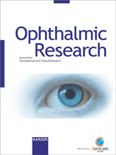
OPHTHALMIC RESEARCH
Transforming Knowledge into Visionary CareOphthalmic Research, with ISSN 0030-3747 and E-ISSN 1423-0259, is a distinguished peer-reviewed journal published by Karger in Switzerland. Established in 1970, this journal serves as a vital resource for exploration and dissemination of knowledge within the fields of Ophthalmology, Cellular and Molecular Neuroscience, and Sensory Systems, maintaining its relevance through its convergence into modern research methodologies leading up to 2024. With impressive rankings in 2023, it holds a Q2 quartile in both Ophthalmology and Medicine (miscellaneous), reflecting its significant contribution to the academic community, alongside Scopus ranks that position it favorably in the competitive landscape of medical and neuroscientific literature. Although not open access, the journal ensures that high-quality research remains accessible to its readership, which includes researchers, professionals, and students eager to stay at the forefront of ophthalmic advancements. By fostering interdisciplinary collaboration and facilitating high-level discourse, Ophthalmic Research is pivotal for those committed to advancing the future of eye care and vision sciences.

JOURNAL OF AAPOS
Elevating standards in ophthalmology and pediatrics.The JOURNAL OF AAPOS, published by MOSBY-ELSEVIER, is a leading periodical dedicated to advancing knowledge in the fields of Ophthalmology and Pediatrics. With an ISSN of 1091-8531 and E-ISSN 1528-3933, this esteemed journal has been a critical resource for researchers and clinicians since its inception in 1997, continuing through to 2024. Recognized for its pivotal contributions, the journal holds a commendable Q2 ranking in both the Ophthalmology and Pediatrics, Perinatology and Child Health categories as of 2023, reflecting its impact within these essential medical disciplines. Although it operates under a subscription model, the journal consistently delivers high-quality peer-reviewed research articles that push the boundaries of clinical practice and education. Researchers, healthcare professionals, and students rely on the JOURNAL OF AAPOS for insightful studies, clinical guidelines, and innovative practices that aim to enhance patient care and outcomes in pediatric ophthalmology.

OPHTHALMIC AND PHYSIOLOGICAL OPTICS
Transforming insights into impactful clinical applications.Ophthalmic and Physiological Optics, published by Wiley, is a premier peer-reviewed journal dedicated to advancing the fields of ophthalmology, optometry, and sensory systems. With an impressive impact factor and categorized in the prestigious Q1 quartile for 2023 across multiple disciplines, the journal provides a vital platform for researchers and practitioners to disseminate innovative findings and explore the complexities of visual science. Founded in 1981, it continues to thrive as a leading resource for reviewing contemporary issues, emerging technologies, and clinical practices. Readers will benefit from its rigorous editorial standards and access to groundbreaking studies pertinent to both academic and clinical environments. Situated at the forefront of the discipline, Ophthalmic and Physiological Optics plays an essential role in bridging the gap between research and practical application, ensuring a comprehensive understanding of vision and its physiological underpinnings.
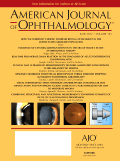
AMERICAN JOURNAL OF OPHTHALMOLOGY
Advancing the Frontiers of Eye HealthAmerican Journal of Ophthalmology, published by Elsevier Science Inc, stands as a premier outlet for significant advancements in the field of ophthalmology. Established in 1918, this journal has a long-standing tradition of disseminating high-quality research, which is reflected in its impressive Scopus ranking, positioned at #8 out of 137 in the ophthalmology category, placing it in the 94th percentile. With its 2023 designation as Q1 in Ophthalmology, it serves as a critical platform for researchers, practitioners, and students who seek to stay at the forefront of ocular health and visual science. Although the journal does not currently offer open access options, it provides an array of access formats, ensuring that valuable research is available to a broad audience dedicated to the exploration and understanding of eye diseases and treatments. As it continues to evolve towards 2024, the American Journal of Ophthalmology remains essential for anyone engaged in ophthalmic research and clinical practice.

Asia-Pacific Journal of Ophthalmology
Exploring the frontiers of eye health research.Asia-Pacific Journal of Ophthalmology is a distinguished open access journal published by the Asia-Pacific Academy of Ophthalmology (APAO), specializing in the latest advancements and research in ophthalmology. Since its inception in 2013, this journal has established itself as a vital platform for disseminating innovative findings and clinical practices across the Asia-Pacific region and beyond. With an impressive Scopus ranking of #10 out of 137 in the field of Medicine (Ophthalmology), placing it in the 93rd percentile, it garners significant attention and respect within the academic community. Currently holding a Q1 categorization in both Medicine (miscellaneous) and Ophthalmology, the journal embraces a broad scope that encompasses clinical studies, experimental research, and reviews aimed at enhancing the understanding and management of eye health. Its open access model since 2019 ensures that all published works are freely accessible, promoting greater collaboration and knowledge sharing among researchers, clinicians, and students. Situated in the Netherlands with a prominent address in Hong Kong, the journal serves as an essential resource for anyone dedicated to the field of ophthalmology.
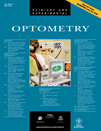
Clinical and Experimental Optometry
Driving the evolution of optometry through scholarly contributions.Clinical and Experimental Optometry, published by Taylor & Francis Ltd, is a distinguished journal dedicated to advancing the field of optometry and ophthalmology. With an impressive scope covering both clinical practices and experimental research, this journal serves as a vital resource for researchers, healthcare professionals, and students alike. Recognized in the Q2 category for Ophthalmology and Q1 category for Optometry in 2023, it underscores its significance in fostering innovative research and clinical knowledge. The journal has been in publication since 1986 and continues to accept contributions up until 2024, reflecting its ongoing commitment to disseminating high-quality scholarly work. With a Scopus ranking of 40 in Ophthalmology and 5 in Health Professions - Optometry, it is positioned among the leading journals in the field. Although not an open-access journal, it remains integral for anyone invested in the latest trends and findings in vision science, making it an essential part of the academic landscape in the UK and beyond.
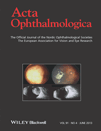
ACTA OPHTHALMOLOGICA
Transforming Eye Care Through Innovative ResearchACTA OPHTHALMOLOGICA, published by Wiley, is a premier academic journal dedicated to advancing the field of ophthalmology and related medical disciplines. Established in 1923 and maintaining esteemed status through converged years until 1994, and then from 2008 to the present, this journal has consistently delivered pioneering research, reviews, and clinical advancements essential for both practitioners and researchers in eye care. With an impressive impact factor and ranking within the top 15 of its category, ACTA OPHTHALMOLOGICA stands as a Q1 journal in both Medicine (Miscellaneous) and Ophthalmology, reflecting its significant contribution to the field. Although it is not an open-access journal, it continues to offer valuable insights and empirical findings that inform clinical practices and innovative research approaches. As such, it remains a vital resource for scholars, clinicians, and students keen to stay at the forefront of ophthalmological science.

CANADIAN JOURNAL OF OPHTHALMOLOGY-JOURNAL CANADIEN D OPHTALMOLOGIE
Illuminating the future of vision care.Canadian Journal of Ophthalmology - Journal Canadien d'Ophtalmologie, published by the prestigious Canadian Ophthalmological Society, serves as a leading platform for disseminating cutting-edge research in the field of ophthalmology. With an ISSN of 0008-4182 and E-ISSN 1715-3360, the journal boasts a commendable impact factor and maintains a strong presence within the medicine and ophthalmology categories, ranking in the Q2 quartile. This journal not only provides significant insights into clinical practices and advancements but also contributes to the understanding of ocular health issues facing contemporary society. Since its inception in 1966, it has published high-quality research, making substantial strides in both practical and theoretical aspects of ophthalmology until 2024. Although it is not an open-access journal, it establishes a vital resource for researchers, professionals, and students alike, fostering an informed community dedicated to improving vision care.